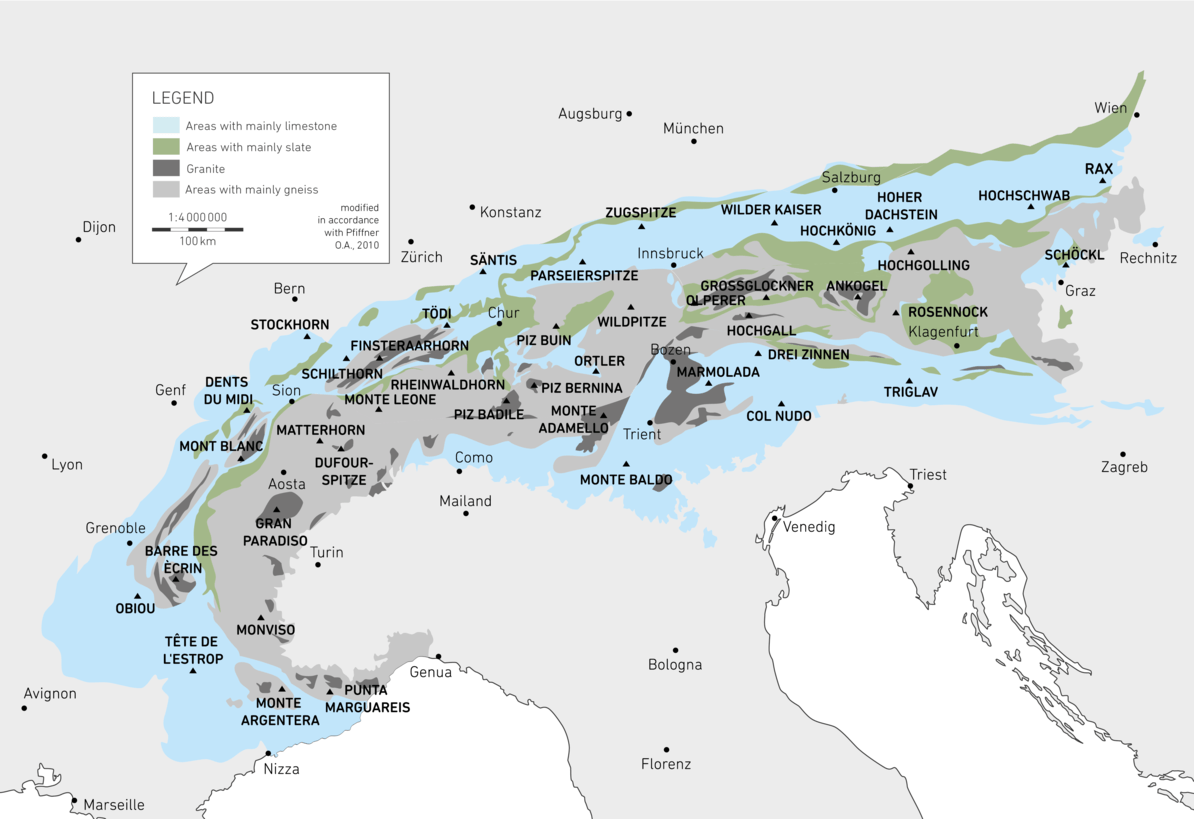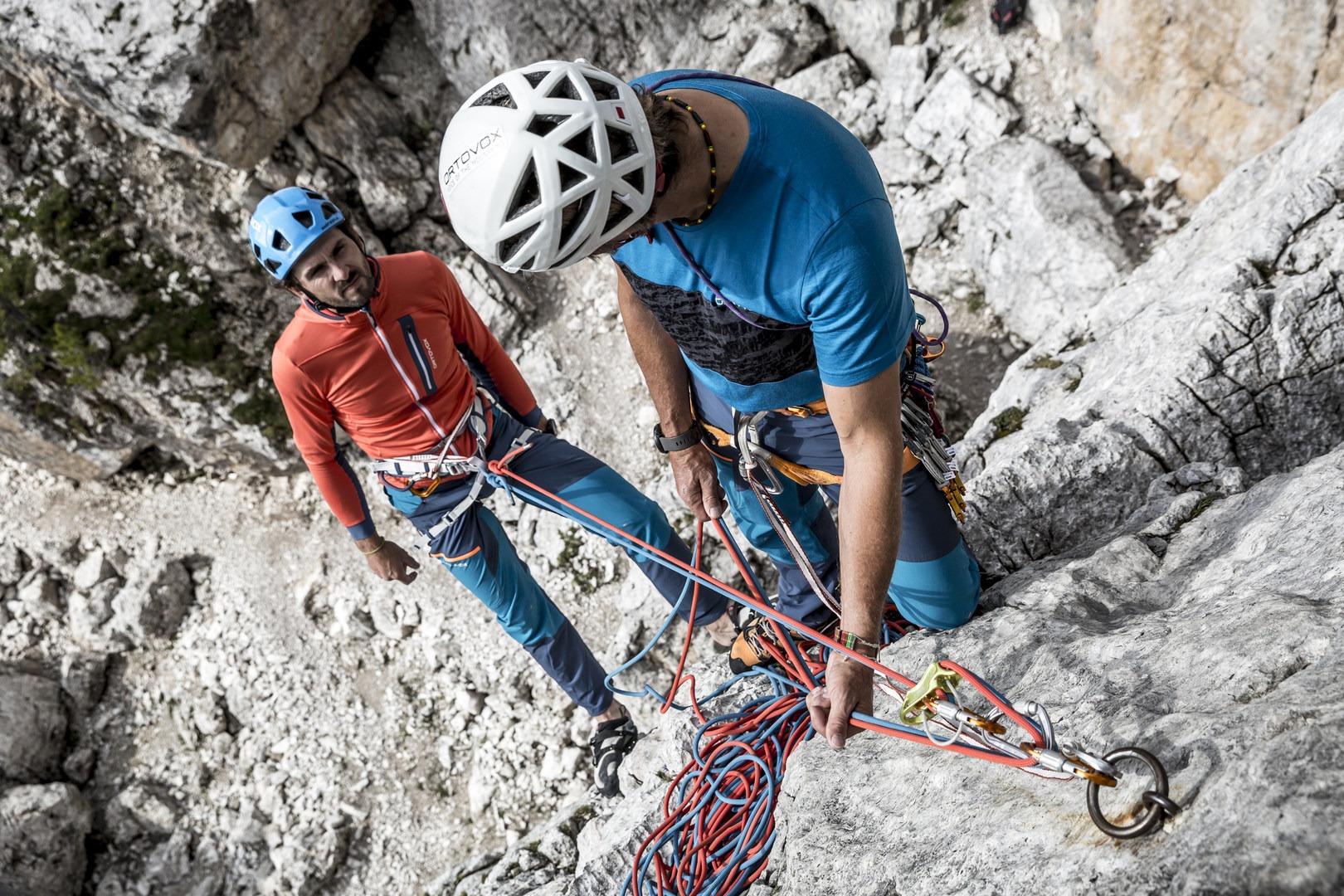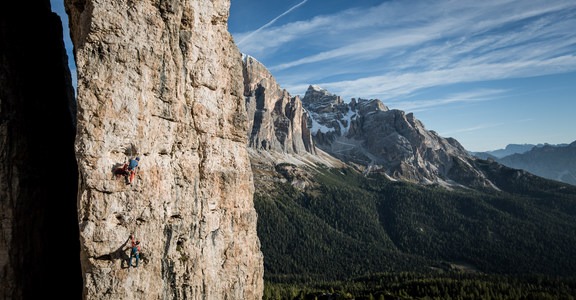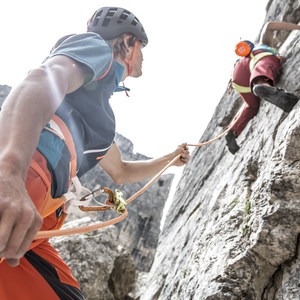A climber's raw material
There are a vast number of rock types in the Alps. Some, such as limestone or prehistoric rock in the form of gneiss or granite, play a key role for climbers. These rock types are crucial in determining the shape of the mountain, the grip and the protection, as well as the strength and breakage behavior. This therefore defines the type of climbing.
Let’s take a look at the geology of the native rock in the Alps. The rock types that are relevant to climbers in the Alps are limestone, slate, granite and gneiss. Alpine climbing rocks differ in quality, weathering, shape and breakage behavior. The rock type is therefore a fundamental factor for every climber and also relevant to safety.

Steep and finger heavy: Limestone
Widespread in the Eastern Alps, this rock type was formed by the solidified deposits of animals and plants as well as shells on the seabed. Unlike granite and gneiss, limestone and dolomite were formed on the surface of the earth. Due to the variety of underwater landscapes and creatures, different types of limestone dominate in the Alps.
Whilst slanted, folded or broken rock is often found in the Northern Limestone Alps (such as Wetterstein), a horizontal deposit characterized by bulky formations with strips you can walk on is dominant further south in the Dolomites. On the western side of the Alps is the Helvetic zone, with intensively folded limestone layers.
From layback scales to friction climbing: Granite
Granite is a deep rock formed by the hardening of magma and released by erosion. As granite magma is extremely viscous and usually gets stuck in the earth’s crust, it can form a weird volume or massive forms with extreme depth such as the Mont Blanc massif. Many mountain groups in the Alps are made of granite: from the Dauphiné to Mont-Blanc granite to the Grossvenediger in the Eastern Alps. The Central Alps are characterized by clefts and horizontal bands as well as vertical and horizontal cracks.
Born out of diversity: Gneiss
Gneiss is a metamorphic rock that has resulted from other rocks under high temperatures and high-pressure conditions. Gneiss therefore includes a huge variety of different metamorphic rock types, which are partially still visible. Gneiss is characterized by “foliation planes” – a kind of layered structure. Most of the gneiss in the Alps is former granite that has warped and recrystallized during the formation of the Alps. Climbing on gneiss is therefore often similar to climbing on granite.
Check out the full series of Safety Academy Lab Rock videos below:
- Alpine basics
- Basic equipment for every climber
- Basic equipment for groups
- Additional equipment for groups
- Storms in the mountains
- Types of rock in the Alps
- Tour planning for alpine climbing
- Packing a backpack correctly
- Rope team procedures
- Knot techniques
- Belay using bolts
- Belay methods
- Anchors
- Coiling a climbing rope
- Rappelling
- What to do in an alpine emergency
- First aid on the mountain
- Rescue techniques while alpine climbing
- Bivouacking in an emergency situation
Visit ORTOVOX’s Safety Academy Lab Rock to view the climbing tutorials in their totality and test your knowledge with their fun and interactive quizzes.
Since the company was founded in 1980 in the south of Munich, ORTOVOX has stood for the highest possible protection during alpine activities. As pioneers in the avalanche safety field, we have played a key role in the development of emergency equipment for the mountains. Innovations such as the double-frequency avalanche transceiver and Smart Antenna Technology, and also targeted training measures, continue to be valuable contributions to making mountain sports a little bit safer and to saving lives.






Comments
Sign In and share them.